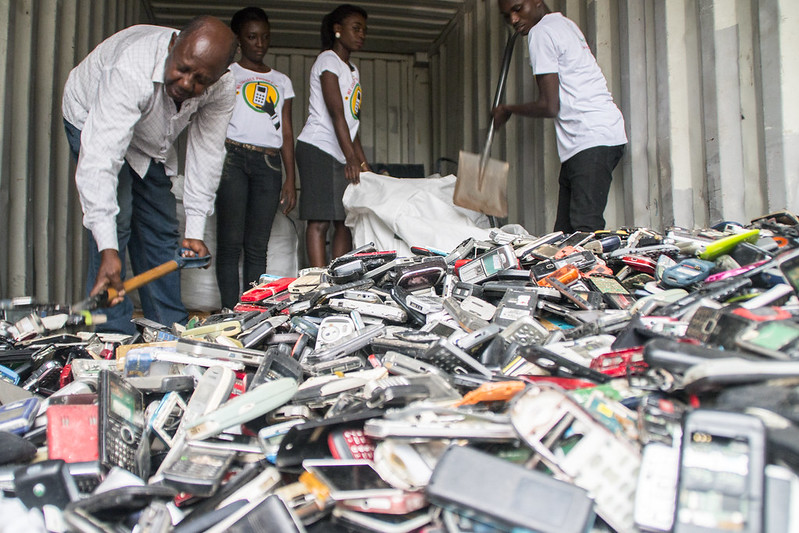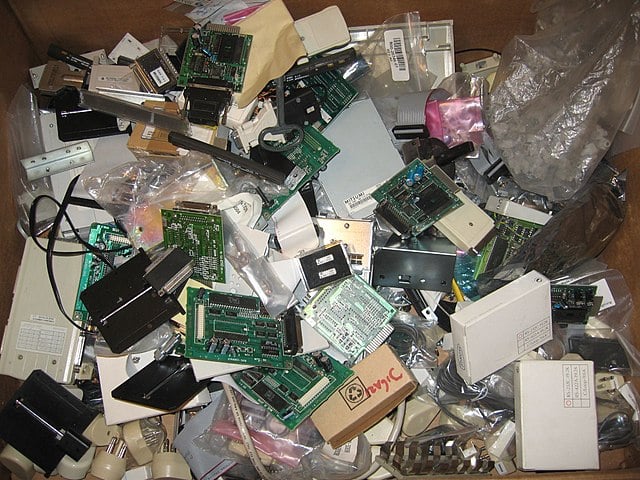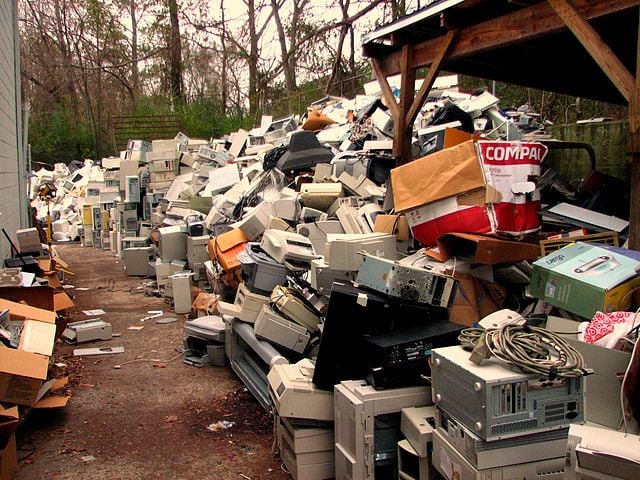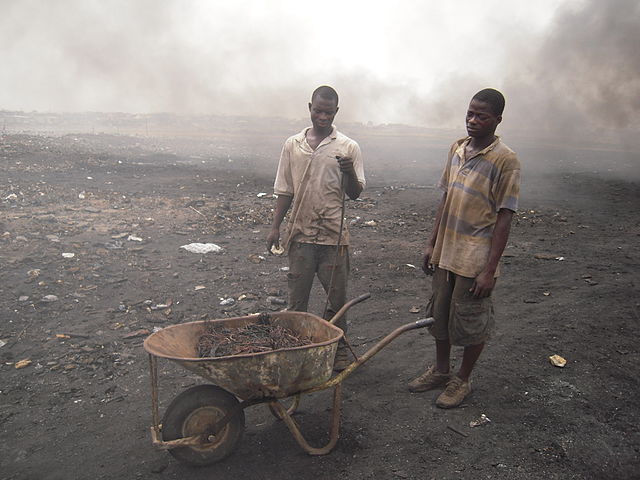
In the past two months, Apple, Google, and Samsung have all launched their newest devices with the hope of getting consumers to upgrade ahead of the winter holidays. However, the companies and their clients may also be adding to a growing environmental problem—namely, that of electronic waste or e-waste.
The International Waste Electrical and Electronic Equipment (WEEE) announced last week that in 2022, 5.3 billion mobile phones will be thrown away. WEEE’s estimate is based on global trade data, which highlights the ongoing environmental problem of “e-waste.” The new research suggests that many people prefer to keep the old phones rather than recycling them.
“People tend not to [realize] that all these seemingly insignificant items have a lot of value and together at a global level represent massive volumes,” WEEE Director General Pascal Leroy said.
Precious minerals not extracted from waste electronics, such as the copper in wire or the cobalt in rechargeable batteries, have to be mined. This further adds to the ongoing problem.
74 million tons of e-waste by 2030
The new study also suggests that an estimated sixteen billion mobile phones worldwide with a third of it in Europe alone are no longer in use. Moreover, electronical waste, including washing machines, toasters, tablet computers, and cell phones, will grow to seventy-four million tons a year by 2030.
Magdalena Charytanowicz of the WEEE said, “These devices offer many important resources that can be used in the production of new electronic devices or other equipment, such as wind turbines, electric car batteries or solar panels—all crucial for the green, digital transition to low-carbon societies.”
17.4 percent recycled
The limited lifespan of many gadgets, mostly cell phones, designed by big tech companies, combined with the limited options to fix older devices, have caused e-waste to surge. Official United Nation’s data indicates that the world generated a staggering 53.6 million metric tons in 2019 alone. Of that, only 17.4 percent was recycled.

Τhe International Telecommunication Union has set a target to raise that to thirty percent by next year. The reason is because e-waste is one of the “fastest growing and most complex waste streams that affects both human health and the environment, as it can contain harmful substances.”
Leroy said there are many options to decrease the sheer volume of the amount. In his words, it can be done by “providing collection boxes in supermarkets, [picking up]…small broken appliances upon delivery of new ones and offering PO [post-office] boxes to return small e-waste.”
E-waste defined
The UN Environment Program defines e-waste as any electrical or electronic equipment that has been disregarded. This includes working and broken items that people throw in the garbage or donate. It is particularly dangerous due to toxic chemicals that naturally escape from the metals inside when buried.
The most common example of e-waste include: microwaves, cell phones, tablets, home entertainment appliances, televisions, video games, printers, and cords and cables. Yet, because of today’s rapid technological advances, a growing amount is products that haven’t stopped working. Instead, a lot of electronic devices that still work fine become obsolete.
Moreover, companies do not always comply with measures for proper disposal even if the technology is available to do so. Furthermore, the EU, U.S., and other developed countries will often export e-waste into developing countries such as China, Taiwan, Mexico, and Pakistan, for instance.
A 2015 report by the European Union Action to Fight Environmental Crime estimated that in 2006 alone, the EU exported 1.9 million tons of e-waste to other countries, and, of that, it sent 1.1 million tons illegally.
E-waste releases toxic materials
The majority of tech companies insist that modern electronics are safe to use. However, most electronics contain some form of toxic materials, including beryllium, cadmium, mercury, and lead, which pose serious environmental risks to both human health and wildlife.

Burying e-waste at a landfill leads to microscopic traces that dissolve into the gross sludge that permeates it. Eventually, these traces of toxic materials pool into the ground below. This is known as leaching.
The more e-waste and metals, the more toxic materials contaminate the ground and freshwater in the surrounding area. This causes disease and sickness in wildlife. It is usually due to lead, arsenic, cadmium, and other metal poisonings from high concentration of these minerals. Even worse, they can be dangerous to the health of humans.
Developing countries at high risk
Developing countries face exceptionally elevated risks, as they import large amounts of e-waste every year. For example, Guiyu, China receives a significant amount of e-waste and also contains some of the highest amounts of cancer-causing dioxins.
Studies by the World Health Organization (WHO) have shown that this amount has detrimental effects on people that work with e-waste. It can also be harmful to those who live nearby.

The United States and other developed nations have now made it illegal to dispose of electronics in landfills. This is due to the risk of toxic chemicals and the potential danger to humans and the ecosystem. However, many developing countries do not have these laws or the ability to refuse imports.
To improve conditions, the International E-Waste Management Network, run by the U.S. Environmental Protection Agency (EPA) and the Taiwan EPA, held a workshop for eleven countries in 2018. Their first goal was to assess possible markets for e-waste material. The second was to protect people and the environment and better interact with the industry and new technology.
See all the latest news from Greece and the world at Greekreporter.com. Contact our newsroom to report an update or send your story, photos and videos. Follow GR on Google News and subscribe here to our daily email!



